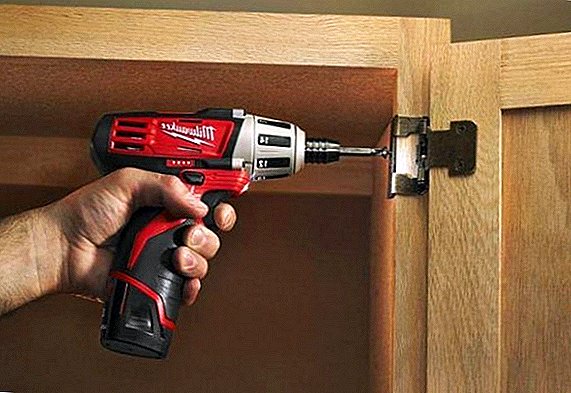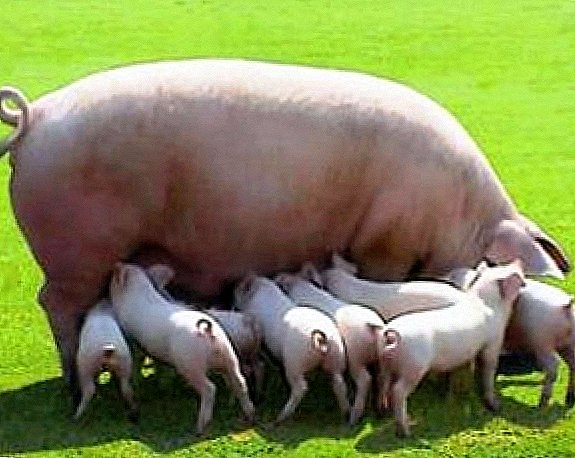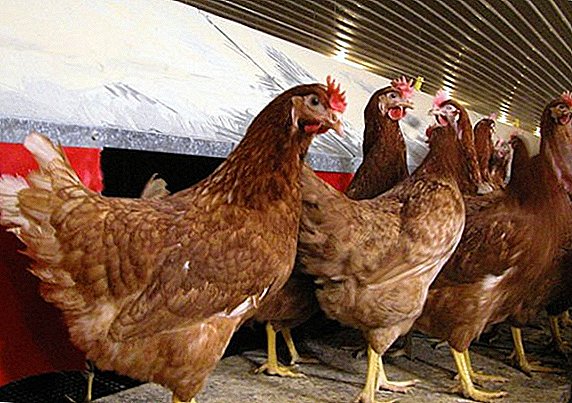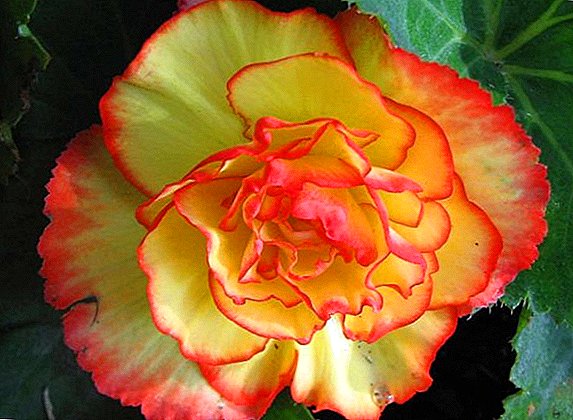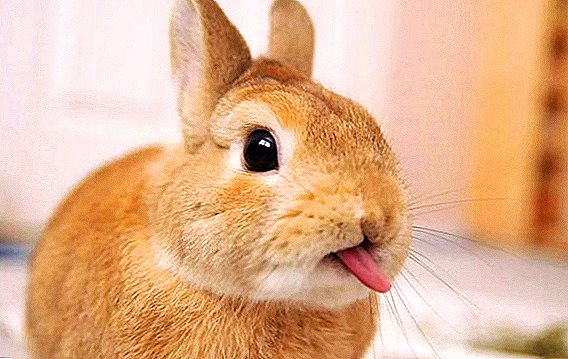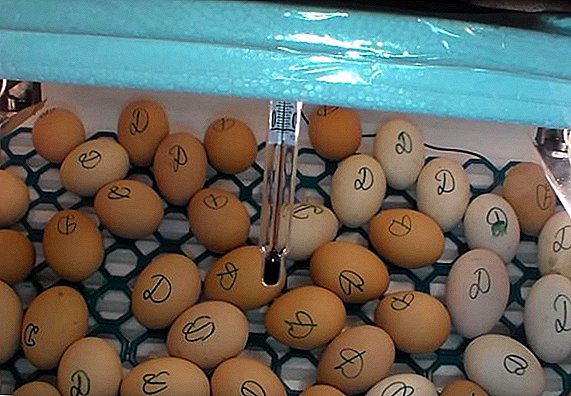 Artificial breeding of young animals in the incubator is widely used in households and farms. To control his work and the indications for the generation of viable individuals is the task of a good host.
Artificial breeding of young animals in the incubator is widely used in households and farms. To control his work and the indications for the generation of viable individuals is the task of a good host.
Introduction
The survival rate of the young and their health (assuming the use of an incubator) directly depend on how well the temperature and humidity indicators are established and maintained, the norms of airing and turns of the expected offspring are observed.
In the natural environment, mother-nature carries the answer, and in the incubator everything is different: here a person takes responsibility for the safety of the offspring on himself:
- For the bookmark, eggs are taken to be even, smooth, regular in shape, without cracks, not older than 7 days.
- The incubator is cleaned, disinfected and tested for readiness, heating it to a temperature of +36 ° C.
- Eggs are laid horizontally or vertically with a blunt end up (depending on the device trays).

All other functions (after laying eggs) will be done by an automatic incubator, while homemade and mechanical incubators require your constant participation in regulating the incubation modes, measuring temperature, humidity, changing the position of eggs.
Since the batch of chickens is formed in a day, it is recommended for convenience to lay the first large eggs in the evening, six hours later - medium ones, after six more - small ones. So chickens at the same time come to the stage of spelling of the shell.
Important! Incubation of eggs at home is permissible only from physically healthy chickens. If the hen is susceptible to disease, it will be inherited by the chickens.
Types of thermometers
There are three main models of temperature meters, they need to be located inside the incubator:
- temperature monitoring is carried out through a special window, if a mercury or alcohol thermometer is selected;
- it is easier to adjust the parameters with the electronic version of the thermometer, because the scoreboard is installed outside, and inside the incubator there is a probe that does not touch the eggs - its data is displayed on the scoreboard with an accuracy of tenths.
Alcoholic
Alcohol thermometers are distinguished by the parameters of security, ease of use (decimal scale) and low cost. A crashed device will not harm the environment and the embryos, it is only necessary to collect fragments of glass. However, it should be noted that the thermometer readings are not entirely accurate.
 Alcohol thermometer in Ryabushka 70 incubator
Alcohol thermometer in Ryabushka 70 incubator
Tips:
- Place several such meters at different points in the incubator to achieve accurate results.
- Do not buy too cheap copies, as their testimony can not be trusted.
Learn how to make a thermostat for an incubator.
Mercury
Mercury thermometers also have a decimal scale division and a small price, but their accuracy is much higher than alcohol. However, a damaged device is dangerous not only by broken glass, but also by spilled mercury, whose vapors will harm the embryos and your well-being.
However, with careful use, this model should be used in incubators.

Electronic
The simplest electronic model is a medical thermometer, which has an accuracy of reading up to a decimal value and a relatively low price. If the device is endowed with a special probe (sensor), then your work is simplified, because the sensor is located inside the incubator, and the board is outside.
The thermometer is usually available in the basic configuration of the incubator, learn about the characteristics of the incubators "AI-48", "TGB 140", "Sovatutto 24", "Sovatutto 108", "Nest 200", "Egger 264", "Laying", "Perfect hen "," Cinderella "," Titan "," Blitz ".
Powered measuring instrument battery. Beware of fakes and cheap Chinese models of poor quality. Buy in specialized stores product not lower than the average price category.

Temperature measurement
- The thermometer is fixed so as to exclude the contact of its working area and the egg shell, because the readings of the temperature of the air in the incubator, and not the temperature of the egg, are needed.
- Try to fix the thermometer away from heating and ventilation elements. Watching the temperature at the specified point, you will be calm for the safety of all offspring (masonry).
- Indications of temperature, humidity and other data at different stages of incubation differ and depend on the natural processes of the development of the embryo. Monitor the temperature data every two to three hours.
- The most accurate measurements of the incubation temperature are carried out by applying a mercury ball close to the nougat, where the embryo is located. Overheating or overcooling of the embryo requires urgent temperature control.
Important! Eggs laid by chicken in the evening and at night (from 20.00 to 8.00), become unsuitable for laying in the incubator, because they probably will not be fertilized. Eggs laid at noon or lunch hours are suitable for this purpose.
Incubation Stages
The complex process of incubation is divided into 4 time stages:
- the first 7 days from the moment of laying eggs;
- second - the next 4 days (from 8 to 11);
- third It starts from the 12th day until the appearance of the first squeak of the non-eared chicken;
- fourth the final one ends with a speckling of the shell and the appearance of a chicken in the light.
 Chicken development inside the egg
Chicken development inside the egg
Strict adherence to the normative indicators of temperature and wet conditions ensures a high survival rate and proper development of the offspring:
- High temperature accelerates the maturation of embryos, which is fraught with the appearance of "overheated" small chickens with an underdeveloped umbilical cord.
- Low temperature lengthens the chickens appearance process for a day and significantly reduces their mobility (maneuverability).
- Significant temperature deviations the chick (embryo) survival rates will be zero.
Learn how to make an incubator, ovoscope, ventilation of the incubator with your own hands, how to disinfect the incubator before laying eggs.
A similar problem occurs with non-compliance with humidity parameters:
- Low humidity threatens the loss of mass by future chickens and their early nibble shell, as there comes an increase in the size of the air chamber.
- High humidity delays the growth of offspring, leads to the likelihood of skin and beak sticking to the shell.

The first
Before being placed in the incubator trays, the eggs are warmed up to +25 ° C, the mobility of the yolk and the presence of the air chamber are checked with the aid of an ovoscope. Next steps:
- The first stage is characterized by the beginning of the formation of the most important organs of the future chicken (embryo). At the same time in the incubator it is necessary to set the temperature + 37.8 ... +38 ° С and monitor the humidity in at least 65-70%. These indicators remain the first three days.
- On the fourth day we reduce the temperature to +37.5 ° С, and the humidity to 55%. Two or three times a day, observing equal time intervals, it is necessary to change the position of the egg (turn it), but not earlier than 4-5 hours after laying the eggs. These actions will help avoid sticking the embryo to the wall of the egg and, as a result, its death.
- At the end of the period, ovoscopic eggs should show a pronounced vascular grid covering 2/3 of the yolk. The rejected eggs are removed. To facilitate the process of revolution in the shell put icons, notes.
Did you know? Chickens begin to sing "songs", whimpering, before laying eggs. Some continue to sing during the egg deposit (sometimes after it). So they broadcast a joyful event.
Second
In the second stage, the body of the embryo reaches a sufficiently large size, a skeleton appears, the first claws are born, the beak, allantois closes in the sharp end of the egg.

The temperature should be maintained at + 37.6 ... +37.8 ° С, humidity - 55%. Moisture drops during this period can kill embryos. The position of the eggs change at least twice a day, observing uniform intervals.
Optimum humidity is achieved using a tank with water installed under the trays. For the speedy achievement of the required moisture parameters, a piece of material is placed in the water.
Find out what to do if a chicken cannot hatch itself.
Third
During this period, the embryo is covered with feather plumage, and the claws are covered with a stratum corneum. The intense formation period uses all the protein, and the yolk sac is drawn in. The temperature remains within + 37.2 ... +37.5 ° С. By day 14, humidity rises to 70%.
The active metabolism of the third stage requires air circulation, therefore the ventilation of the incubator takes 5-10 minutes of time 2-3 times a day (we observe equal periods of time).
After 18 days, ovoscopy is performed. The germ should occupy most of the space, and the air chamber - only 30%. The necks of the born chicks are elongated and directed toward the blunt end of the chamber. The thin squeak of chicks is heard.  Ovoscopic chicken eggs at different stages of embryo development
Ovoscopic chicken eggs at different stages of embryo development
Fourth
The final fourth stage begins with an easy breakthrough of the airbag film. The temperature of the incubator is maintained at about +37.2 ° C, the humidity is gradually adjusted to 78-80%. The incubator is ventilated twice a day for 10-20 minutes.
Eggs are not subject to change of position, and an extremely permitted space is established between them. Squeak of chicks serves as an indicator of their health. Gentle and calm testifies to the normal condition of the chicken. Loud and heavy signals unsatisfactory.
Three strokes to a healthy chick are enough to pierce the shell. The first breath and open eyes help the baby get out of the original house. Newborns are left in the incubator until dry, then transferred to a brooder or entrusted to the hen.
Did you know? British ornithologist Joe Edgar discovered the ability of chickens to experience empathy. As part of the experiment, the chicken was stressed, while his mother behaved as if she had experienced the problem herself. Chickens are sad, being far from their relatives or in the case of the death of a chicken.

Hatching chicks
Hatched chickens are inspected and carefully selected. For further development, chickens are active, responsive to sounds, covered with bright down with glitter, having clear weakly protruding eyes, a small beak and a soft stomach with an umbilical umbilical cord. Weak unstable youngsters with obvious signs of deviation from the norm kill, because they are deprived of the chance to become viable.
Learn how to care for chickens after an incubator, how to use an infrared lamp for chickens, how to feed chickens from the first days of life, how to determine the sex of a chicken, what to do with diarrhea in chickens, what to give to chickens.High mortality of chickens is caused by two main parameters:
- low quality eggs;
- non-compliance with the incubation regime.
Modes of incubation of chicken eggs: video
How to incubate chicken eggs: reviews

incubated this year about 35 eggs. the luminaries on day 7 on the ovoskop, sifted aside the fruit. During the entire incubation, the pace was 37.8-37.9 g C. C. The insect was of one breed - from 19 eggs there were 6 empty (68% fertility), in the second - from 17 eggs 7 were empty (59% fertility). 10 chickens were bred from the first breed of laid eggs (77%), 9 chickens (90%) were bred in the second breed. the result of the hatch is more than satisfied, considering that 77 and 90% of the chickens were bred from the laid eggs. the implant was not satisfied. incubator from Vinnitsa - THERMAL 60 with manual overturning, adjusting temp by means of a mercury thermometer and a screwdriver.






